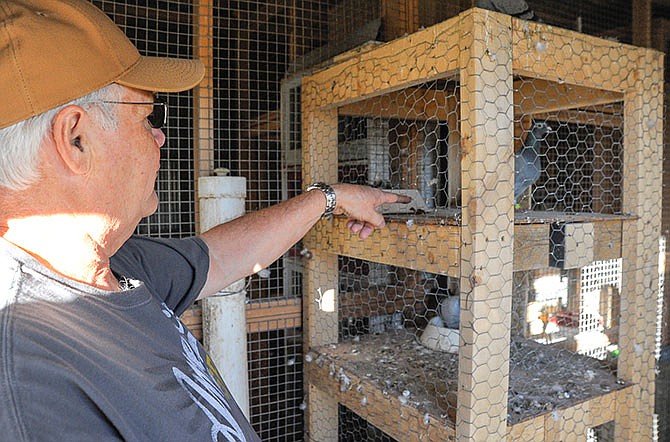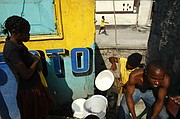RUSSELLVILLE, Mo. - A grandfather's hobby is now something he shares with his grandsons.
The best part of this second-time-around interest in homing pigeons for Larry Burlingame is Caleb and Campbell Nichols are responsible for the daily care and maintenance of the feathered pets.
"I can just come visit in the evening," Burlingame said.
In 2010, Burlingame and the Nichols boys brought home their first two pairs from Fulton.
"They're no different than having a chicken or a dog," Burlingame said. "They're just fun to play with."
In five years, their stock has grown to 40. The Nichols have built a pigeon coop in their backyard. Also, the grandfather-grandsons trio have extended their travels to Tulsa, Oklahoma.
They take their best flyers out early in the morning, release them and hope they find their way home.
"When you let them out, it's cool to watch them fly," Nichols said.
Their first attempt was releasing in High Point to fly back to their rural Russellville home. Gradually, they expanded the radius to Springfield and, this summer, as far as Tulsa.
Although only about half of the 16 released 250 air miles away returned, they should improve the breeding stock for their next generation, Nichols said.
"We weed them out by who makes it home quickly," he said.
The homing instinct is natural. However, the farther away they release them, the broader the chance of predators and other threats.
Some of those that didn't make it back this time were from the first generation they raised, Nichols said.
Although it's a bit sad to lose some of them, it's still a fun hobby overall, he said.
Their next goal is to release 500 air miles away in Dallas, Texas.
Some homing pigeons tend to show a little more personality, Nichols said. Some are rowdy, and others are comfortable being held.
The Nichols boys and Burlingame have one hen aged 14, older than they expected her to survive, he said.
The birds pair for life. So when the Nichols and Burlingame pair them to breed for better qualities, it takes some maneuvering.
In addition to simply returning from the long-distance flights, another trait they think will be valuable is the lighter feathers. Nichols suggested the coloration may help camouflage them from predators.
"Not a lot of people around here are doing this," Burlingame said.
However, they would like to see more Mid-Missourians take up the interest. Some places even have racing clubs.
"What I like is that no one else does this kind of thing," Nichols said.
Most of their work has been trial and error.
Friends and family often respond in disbelief that a bird could find its way back from so far away, Burlingame said.
And although they don't have a scientific explanation for the phenomenon, Nichols' answer is "it's how God made them."


